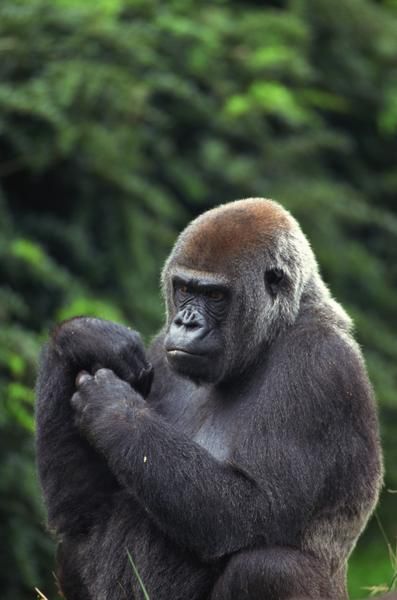“Short ‘power meditations’ train our mind to focus quickly on the tasks immediately at hand in our life. This in turn helps us to achieve the goals that we have set ourself, save time and get more out of the opportunities that we have each day”
 Dear <<First Name>>,
Dear <<First Name>>,
My article below explores how you can sometimes make your mediation time shorter, but to good effect, particularly around stilling your mind. If you enjoy it, then here’s the final call for the
mini-retreat this Saturday: Mindfulness meditation for mastering & stilling the mind on Saturday. If you are really master your ability to still your mind, then this is the session to go for!
In the spirit of cold-turkey,
Toby
Meditating ‘Cold Turkey’
With regards to meditation it is best to get in to good habits as soon as possible. One of the main good habits that we are trying to develop right from the outset of our practice is discipline and focus. This means that once we have sat down on our meditation seat we are entirely focused on the job at hand and do not allow our mind to be knocked off course by distractions, no matter how much they may be nagging us. To this end it can sometimes be better to focus on the quality of our meditation practice rather than the quantity. Five minutes of really focused and applied meditation is worth more than twenty minutes where our application is half hearted, and our mind spends 70% of the time distracted.
To this end here is a five minute meditation where we practice stopping our thoughts ‘Cold Turkey’:
Sit comfortably with a naturally straight back, have a watch or other timing device handy.
Take a few deep breaths, center yourself, then imagine that the past and future dissolve away, only the present remains.
Be aware of the inner voice in your mind that is talking pretty much all of the time in our waking life, take about 1 minute to watch it and listen to it, ensuring that you do not get identified with it.
Using your watch or countdown timer, now begin a period of five minutes where you are 100% focused, and your only task is to let go of your thoughts and stop thinking. Imagine that the thoughts and images in your mind are like a TV, as soon as a thought or an image appears, inwardly press the ‘off’ button on your inner remote control, and let go of the thought, return your mind to zero, no thought.
For the five minutes that you have given yourself, apply yourself to this task with total commitment. No ifs and no buts, your only job is to keep alert, be fully present and stop thinking. You are not asking yourself to be perfect, but you are committing yourself to really applying yourself for this short time to do the very best you can. Initially you may get knocked off track a few times, but if you do it regularly with real application, you will find that your ability will improve substantially in a short period.
Once the five minutes is up, spend a final minute relaxing and observe the space that you have created in your mind through your efforts. When you bring the meditation to a close, be sure to congratulate yourself, for that short time you can say with your hand on your heart that you gave it your all!
As well as creating good meditation habits, this form of ‘power meditation’ also trains our mind to focus quickly on the tasks immediately at hand in our life. This in turn helps us to achieve the goals that we have set ourself, save time and get more out of the opportunities that we have each day.
Related article: Mental mastery – re-discovering joy in your thinking
Article © Toby Ouvry 2021, you are welcome to use or share this article, but please cite Toby as the source and include reference to his website www.tobyouvry.com
In case you missed the last article: Resilience thru acceptance – matching your expectation with your reality
If we take a working definition of resilience as the ability to bounce back quickly from setbacks and obstacles (or apparent setbacks and obstacles), then what are the most important things to be aware of to get good at it? In this article I’m going to be exploring the role of empowered acceptance in competent resilience….
Read full article
 Saturday 17th April, 2.15-5.15pm –Mindfulness meditation for mastering & stilling the mind Mini-retreat
Saturday 17th April, 2.15-5.15pm –Mindfulness meditation for mastering & stilling the mind Mini-retreat
In a sentence: Develop the mindful skills that will enable your mental health and wellbeing to thrive, and how to still and focus our mind. Make your mind a source of quiet confidence & cease feeling overwhelmed by mental over-activity and busyness.
Overview: Would you like to:
- Develop ways of working with your mind that will enable it and you to thrive?
- Learn how you can connect to an inner stillness that is able to withstand the stresses and strains of your daily life, helping you stop feeling mentally & emotionally overwhelmed?
- Feel as if you are in control of your mind, rather than it controlling you?
 Life-fullness – The Integral Life-Coaching Program with Toby
Life-fullness – The Integral Life-Coaching Program with TobyAre you looking a coach who can help you to:
- Meet the challenges, stress and changes that you face in a more effective and mindful way
- Become happier within yourself, in your relationships and at work
- Be actively accountable for finding a sense of balance/well-being in your life and fulfilling your personal potential?
- Guide you to find and operate from a deeper sense of meaning, motivation and connectivity in your life?
All upcoming classes and workshops for at IMA:
Ongoing – Weekly Tuesday, Wednesday Online class schedule
Ongoing on Wednesday’s, 7.30-8.30pm – Wednesday Meditation for stress transformation and positive energy with Toby (Bukit Timah)
Ongoing on Tuesday evenings, 7.30-8.30pm – Tuesday Meditation for stress transformation and positive energy with Toby (East Coast)
Starts Tuesday/Wednesday evening February 23rd/24th – Meditations for thriving and energy creation amidst Covid – A seven week course
Saturday 17th April, 2.15-5.15pm – Mindfulness meditation for mastering & stilling the mind – Masterclass & Mini-retreat
Tuesday 27th & Wednesday 28th April – Live & Online Monthly Full Moon Meditation & Manifestation Session
Saturdays 8th & 22nd May, 3-5pm – Mindful Parenting – Practical Techniques for Bringing Awareness, Appreciation and Enjoyment to the Experience of Parenting
Integral Meditation Asia
Online Courses * 1:1 Coaching * Books * Live Workshops * Corporate Mindfulness Training *Life-Coaching * Meditation Technology
 Dear Integral Meditators,
Dear Integral Meditators,









